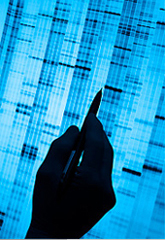
The pace of progress has been astounding with advances in the use of genomic information to provide faster, more accurate, and more in-depth information to enable personalized patient care.
We’ve come a long way in improving the way that a patient’s genome sequence data is analyzed and interpreted to realize the full potential of personalized medicine. Here are four factors helping to overcome barriers and achieve new milestones for using genomic data to provide faster, more accurate, and more in-depth information to guide clinicians in delivering personalized care for patients.
Factor #1: Fast database query of the genome
Problem: Relational database architectures make it possible to store large quantities of sequencing data, but querying whole genome data can be time-consuming and take days to weeks.
Solution: The GOR (Genomic Ordered Relations) database is able to query whole-genome sequences in real time. The reason is that GOR understands the genome in terms of chromosomes, its natural structure, rather than as a continuous string of sequence. That’s both intuitive and innovative. When searching for a variant, tools in the GOR architecture don’t have to scan each individual’s entire sequence; they retrieve the variant straight from its location. Annotation data – information on what diseases or conditions variants have been linked to – are also stored in the same way. The GOR database was pioneered a decade ago by deCODE genetics, one of the first organizations to manage truly large genetic datasets, and is now being used by NextCODE for clinical applications of genomic data.
Factor #2: Fast, reliable identification of disease-causing variants
Problem: Many sequencing analysis pipelines are only powered to process data in a compressed format called Variant Call Format (VCF) files. These comprise only a tiny fraction of the genome, and being working only with VCF files makes it difficult to correct common alignment and allele-calling errors. That can result in both false positive and negative results, or to missing the key causative variants altogether.
Solution: The foundation for improved sensitivity and specificity is the ability to use VCF data on top of the raw sequence data from which it was derived. NextCODE’s pipeline and clinical interfaces, powered by GOR, give users the ability to go back to and visualize raw sequence data at a click. This approach enables genomic analysis and interpretation by seeking out disease-causing genetic variants, either in specific patients, or for research studies in a clinical setting.
Factor #3: Patient genomic information at the fingertips of the clinician
Problem: Many of today’s genomic interpretation tools are too complex and difficult to use by clinicians who may have minimal experience with genetic informatics tools.
Solution: All of the complex informatics required by a clinical analysis tool should disappear at the fingertips of a clinician. It starts by having a robust foundation to the informatics platform, and using the GOR database architecture enables rapid cycling between personal sequence data and broad clinical knowledge. The result is the Clinical Sequence Analyzer (CSA) in which clinicians can simply type in a patient’s symptoms, and CSA will search the patient’s whole genome for variants that may be relevant.
Factor #4: Applying the full power of whole-genome sequencing to cancer tumor analysis
Problem: Many of today’s approaches to the analysis of cancer genomes only look at the immediate next step for a course of treatment, an important capability but only part of a holistic view of a the genetic profile of a patient’s cancer and what can be done to fight it.
Solution: The Tumor Mutation Analyzer makes a more holistic approach possible, analyzing a whole exome or whole genome sequence from a patient’s own genome and from tumor cells. Comparing the two it is possible to isolate the variants likely to be cancer drivers. The distinguishing feature of TMA is the depth of the data it stores and the unprecedented level of detail it provides to more accurately identify variations. This level of detail is especially important in cancer genetics, where the chances of finding previously unknown variants are very high, and even if a mutation is successfully targeted with a course of treatment, another potential driver is often waiting in the wings.
The pace of progress has been astounding with advances in the use of genomic information for patient care. How will the path continue in the future? Stay tuned.










